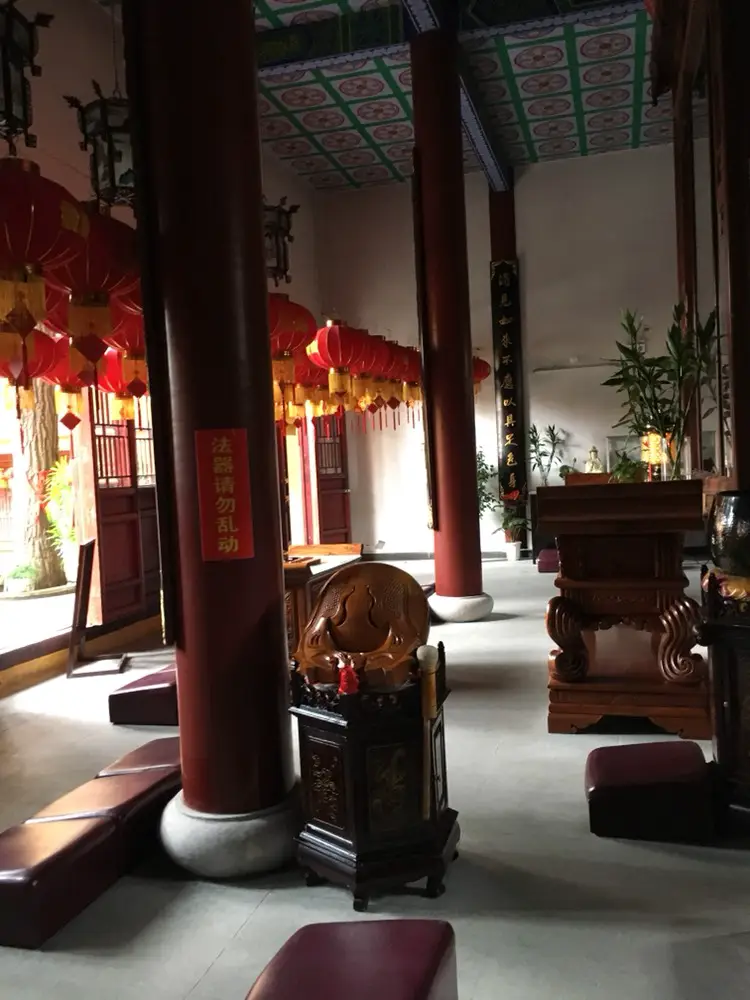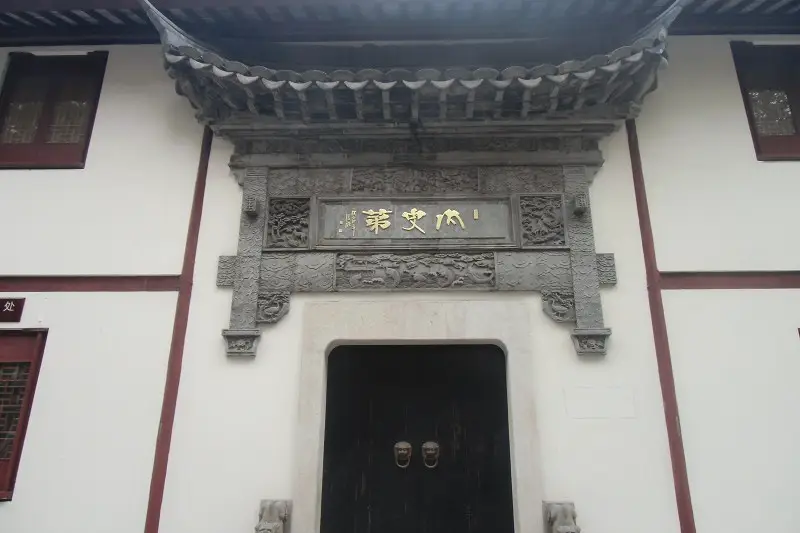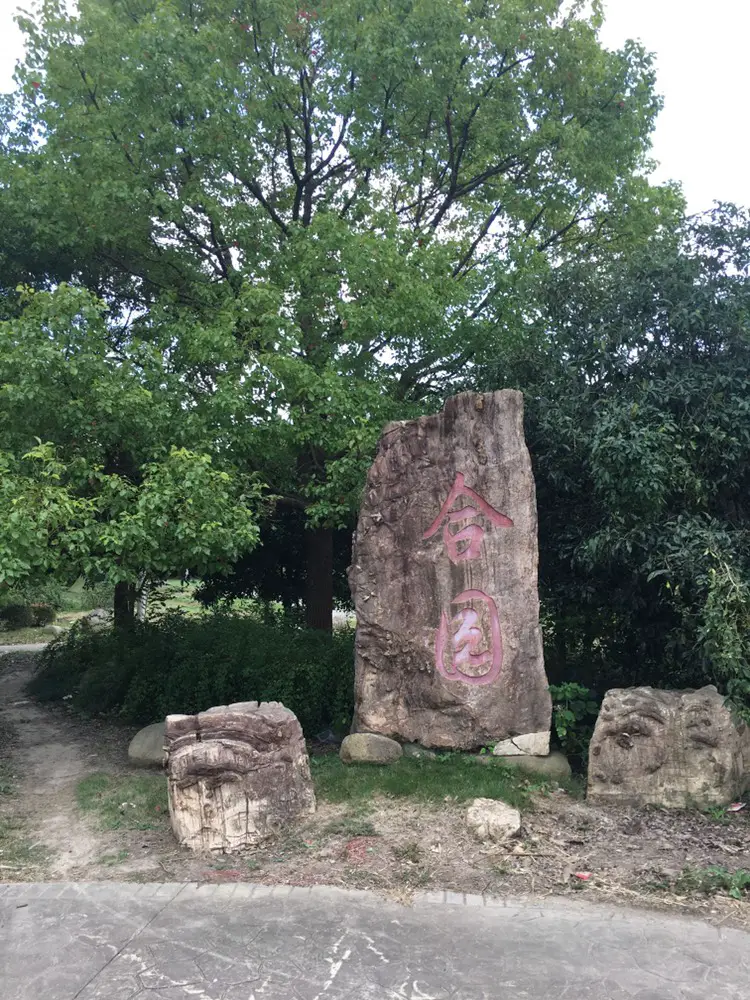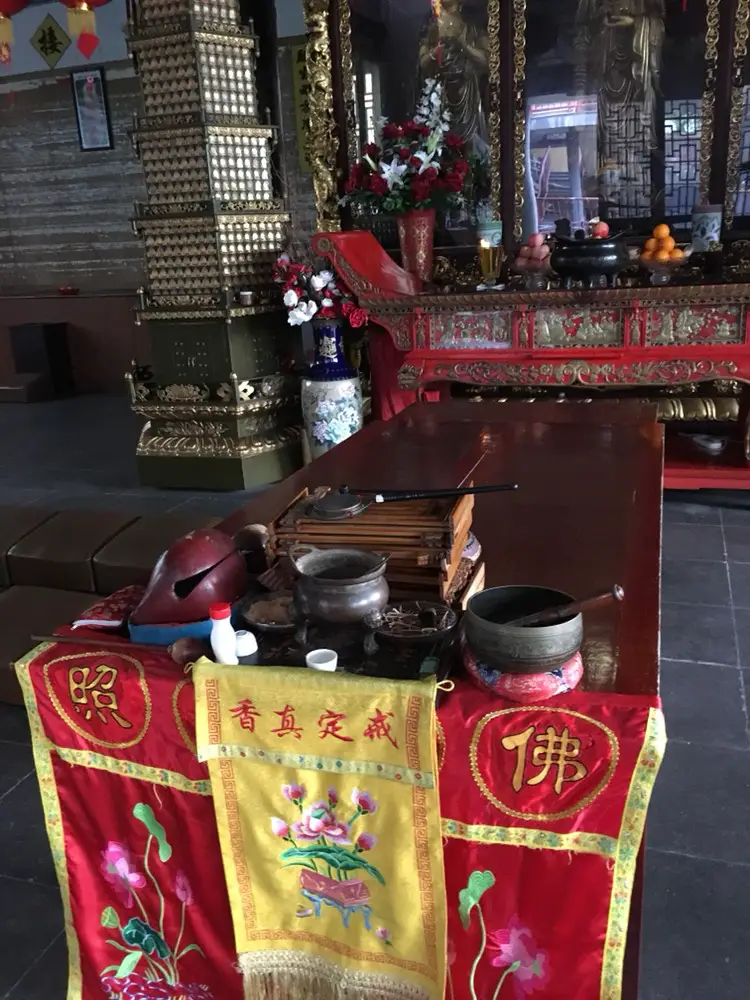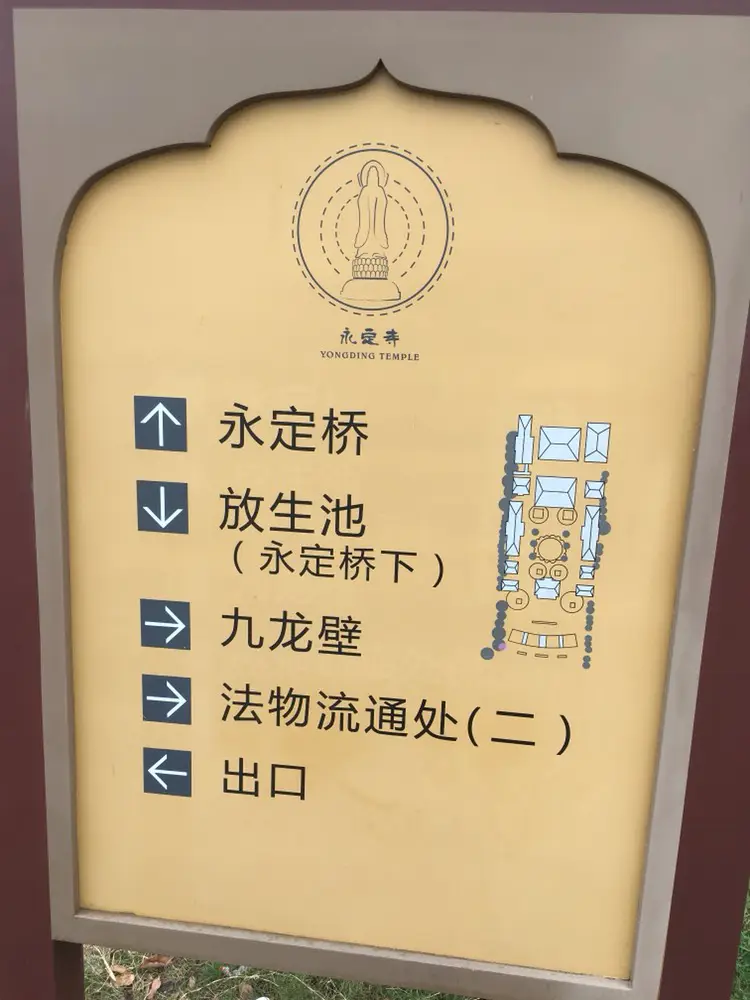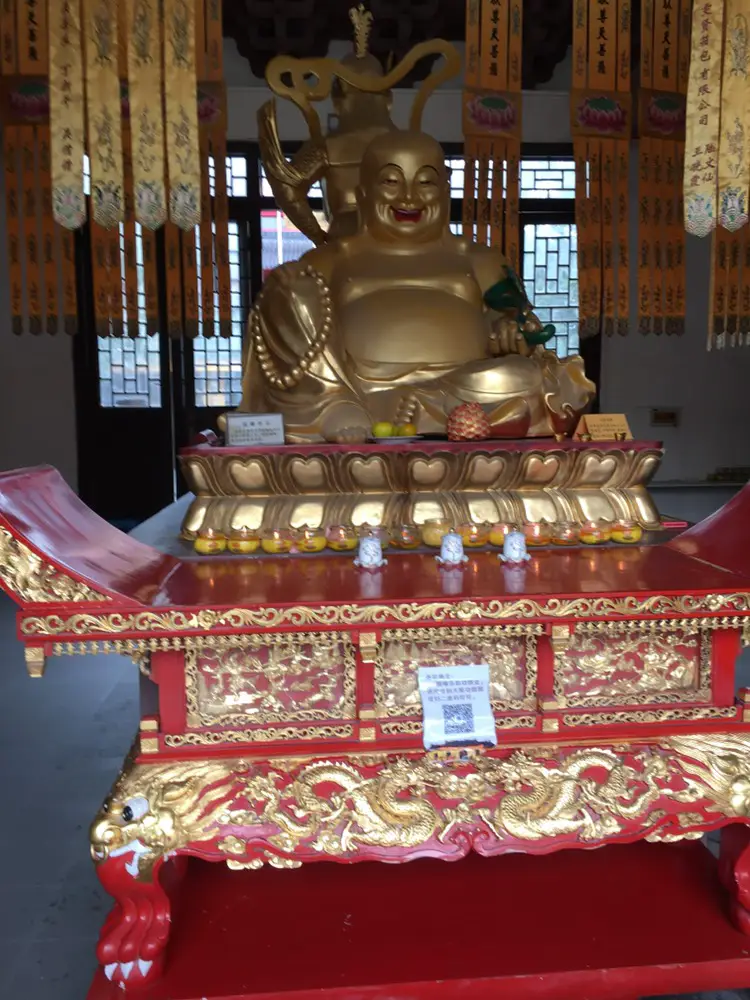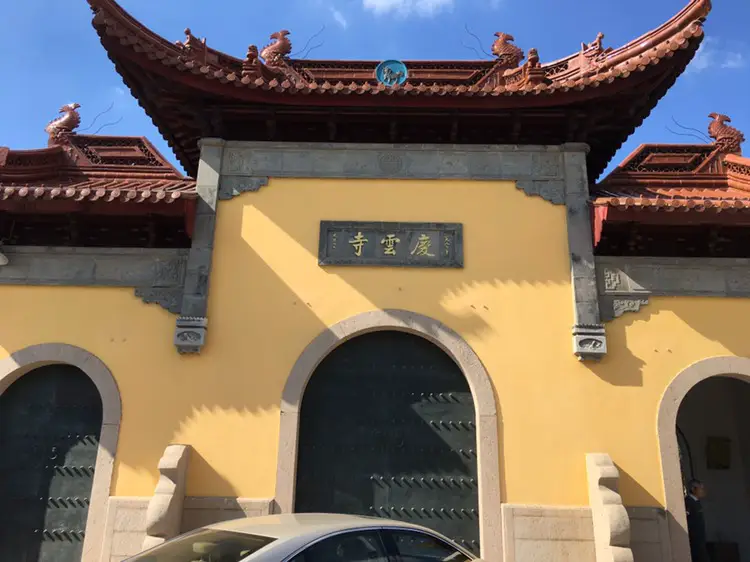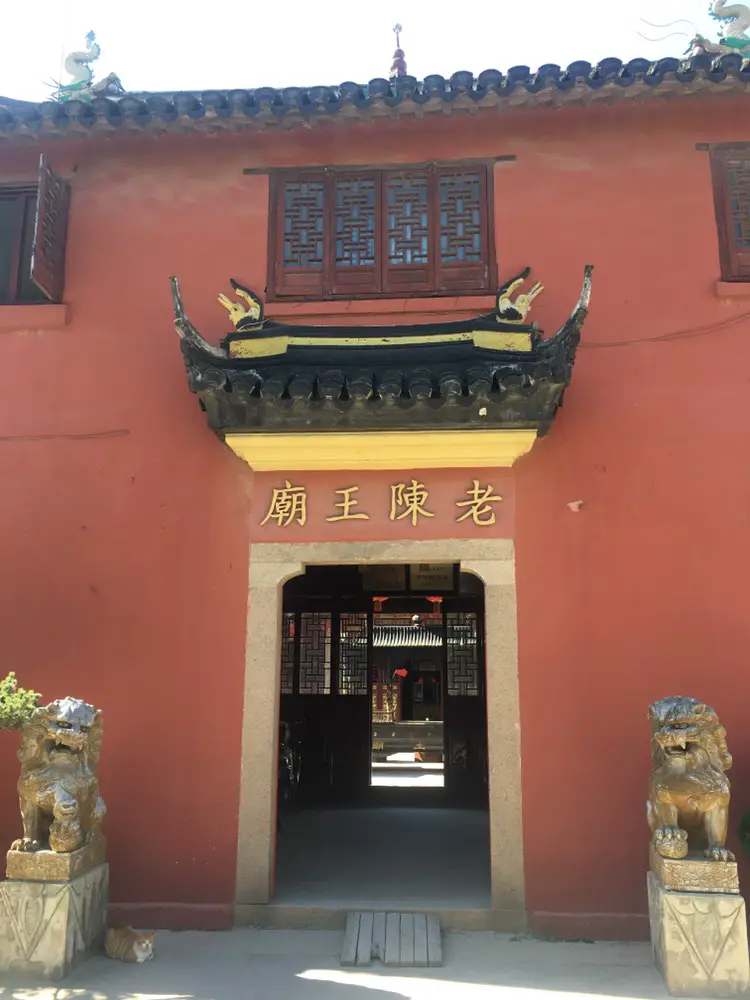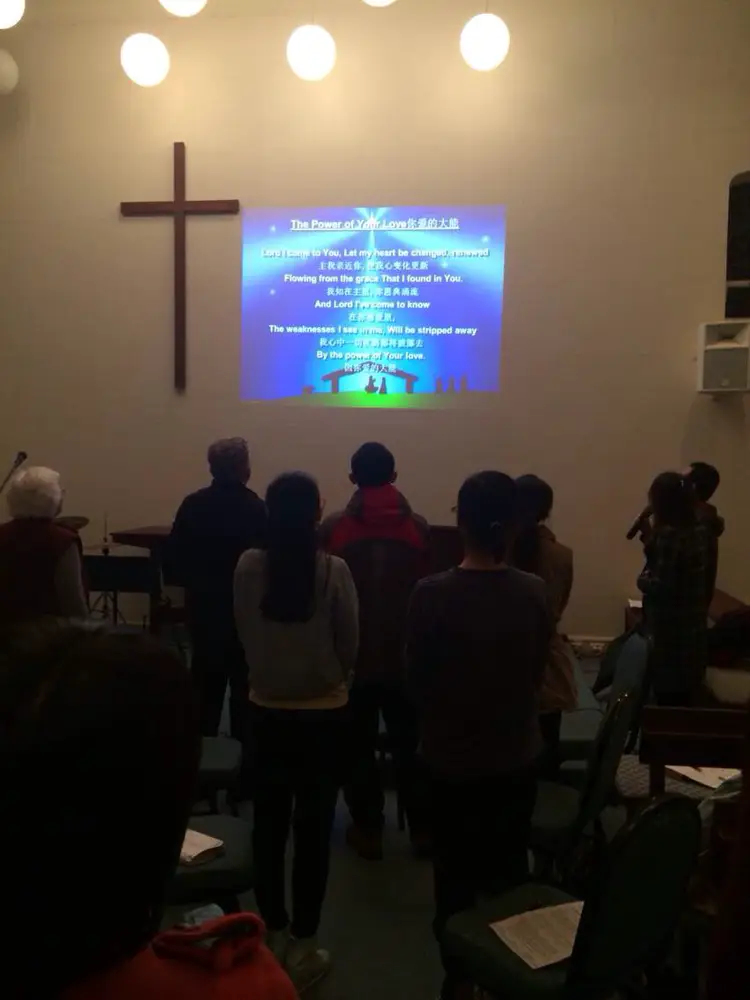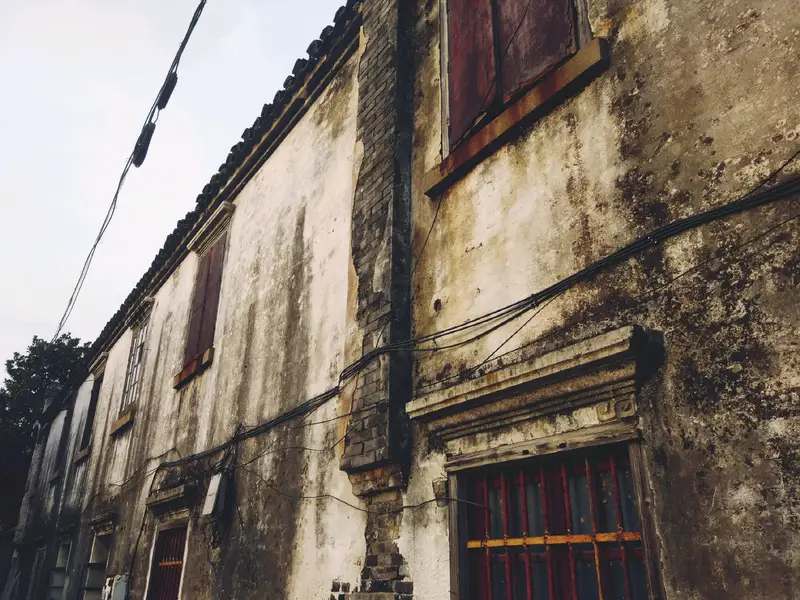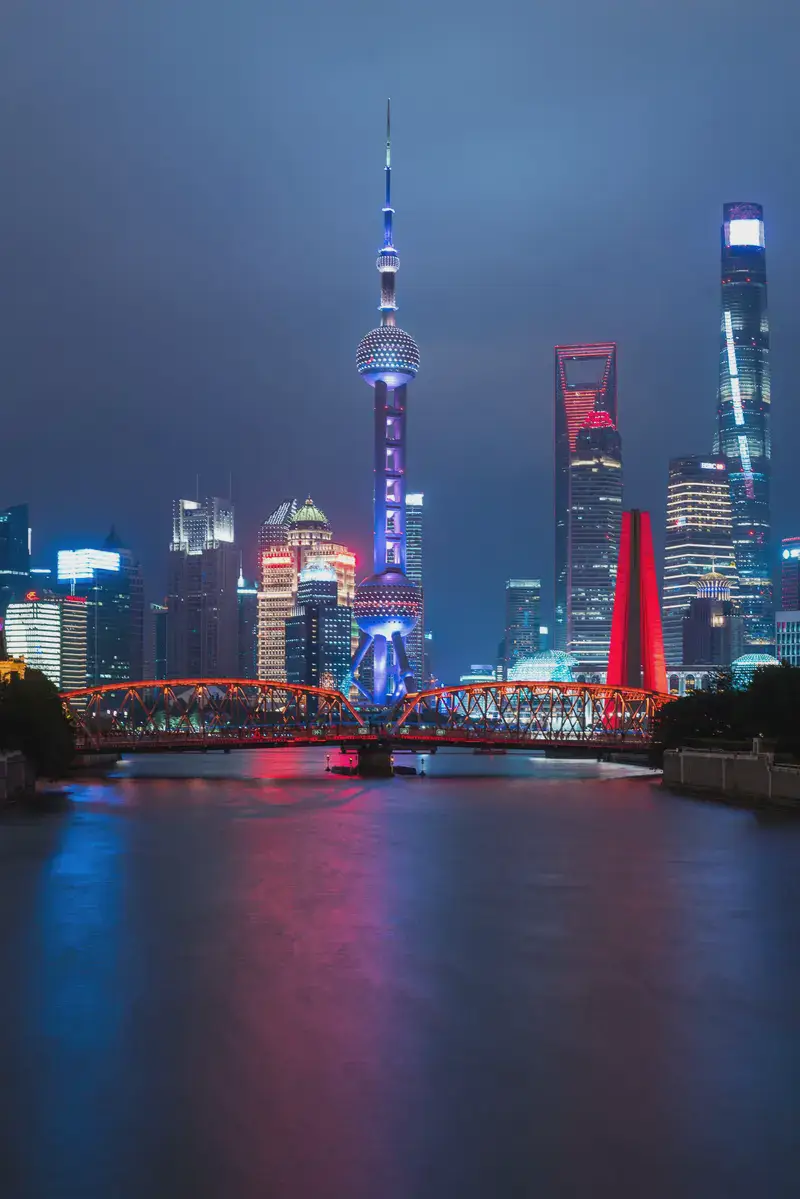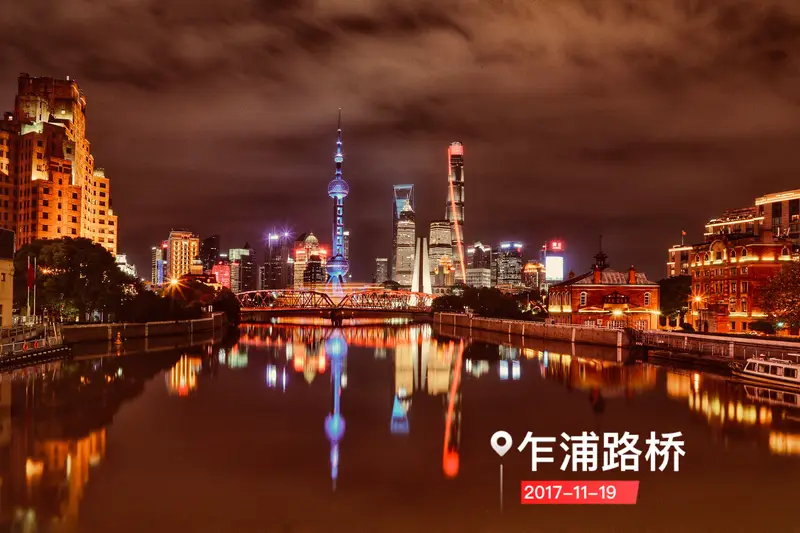Location & How to Get There
Xunlong Zen Monastery sits in the southeastern corner of Zhoupu Town, Pudong New Area, Shanghai. It’s a hidden gem away from the city’s hustle, yet easy to reach. If you’re coming from downtown Shanghai, take Metro Line 16 to Zhoupu East Station, then hop on bus 1002 or 1003—it’ll drop you right near the monastery. Driving? Plug “Xunlong Zen Monastery, No. 159 South Bazao, Zhoupu” into your GPS. Cyclists can enjoy a peaceful ride along rural roads, especially nice on weekends.
Natural Beauty: Ginkgo Trees & Joyful Magpies
One of Xunlong’s charms is its ancient ginkgo trees. Five massive ones were planted here over 300 years ago, and they still gift the monastery with golden leaves every autumn. The front tree is huge—think of a natural umbrella! In fall, the ground is blanketed with yellow leaves, perfect for Instagram photos. Even better, these trees attract magpies (a symbol of good luck in Chinese culture). You’ll spot their nests swaying in the branches, and hear their cheerful chirping. It’s like nature’s own soundtrack here!
Cultural Stories: From Temple to Community Hub
Xunlong Zen Monastery isn’t just old—it’s full of stories. Built in the 1720s during the Qing Dynasty, it started as a simple Buddhist space with halls for Buddha, Guanyin, and local gods. Over time, it grew! In 1792, they added Fayun Hall (now a mix of lecture space and meeting spot for local farmers). My favorite part? The Wenchang Pavilion, built in 1800 for poets and scholars to debate art and life. Walking through these halls, you’re stepping back in time. Fun fact: the monks never owned land until locals donated 23 acres in the 1860s—they called it “incense fields” to support the temple!
Spiritual & Historical Highlights
Inside Xunlong Zen Monastery, you’ll find a blend of spirituality and history. The main hall still holds statues of Buddha, Goddess Guanyin, and water-fire deities. Fayun Hall, once a classroom for Buddhist teachings, now feels like a bridge between past and present. Look up at Wenchang Pavilion—it’s tiny but packed with vibes. Scholars used to gather here, imagining debates over tea while the wind rustled through the bamboo outside. Even the layout tells a story: the original 9 rooms expanded over decades, like a living museum of Qing-era architecture.
Practical Visit Tips
- Opening hours: Generally open daily, but double-check online (some monasteries close early or on rainy days).
- Entrance fee: Free! But there’s a donation box if you want to show support.
- What to bring: Comfy shoes (cobblestone paths!), a camera, and cash for small offerings.
- Best time to visit: Autumn for the ginkgo leaves, or mornings for quiet reflection. Avoid noon on weekends if you hate crowds.
Off-the-Beaten-Path Experience
Unlike busy spots like the Bund or Disneyland, Xunlong Zen Monastery feels like a secret. You’ll hear more birds than cars, and the air smells fresh (no city smog here). Locals come to pray, chat quietly, or just sit under the ginkgos. Try these fun extras:
- Tea time: Some halls have basic seating—ask if you can sip local tea while watching the light filter through ancient windows.
- Mini-pilgrimage: Follow tradition by lighting incense, making a wish, and leaving a coin.
- Seasonal magic: Winter sunrises here are stunning, with mist rising off nearby fields.
Why Xunlong Zen Monastery Is Special
This place isn’t about flashy tours—it’s about slowing down. You won’t find souvenir shops or tour buses. Instead, there’s history in every brick, nature in every corner, and a sense of peace that’s rare near Shanghai. Whether you’re into photography, meditation, or just exploring old-school China, Xunlong Zen Monastery gives you a break from the city’s rush. Come early, stay awhile, and let the magpies remind you why simplicity can be so beautiful.


